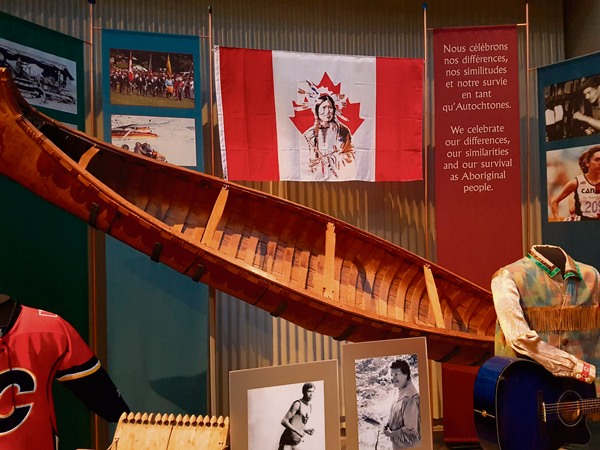
Nearly 20 years ago, a 19-year-old John McDonald marched outside of the University of Cambridge and symbolically ‘discovered’ and ‘claimed’ England for the First Peoples of the Americas.
McDonald, a Cree/Métis man who grew up in Prince Albert’s west flat, was a history student at the time. He had won a scholarship to take courses overseas.
“We were taught in school about Cartier and Cabot and Columbus, of course, and Champlain and all of these Europeans who came to Turtle Island to quote unquote discover and claim for the crown heads of Europe,” he said.
“I want to show that the history isn’t always as accurate as it is taught to people.”
His act of protest, which gained international attention, took place on July 27, 2000. Now, in 2020, McDonald said not much has changed in the world with discrimination of Indigenous peoples.
The idea of ‘discovering’ and ‘claiming’ England started as a joke between he and a friend on a trip to Saskatoon, McDonald said.
“He jokingly had said ‘You know, you’re going back to the land of the colonizers. Wouldn’t it be funny if you turn around and claim them?’” explained McDonald.
“We started talking about it a little bit more and fleshing out the idea a little bit more and by the time we got back to P.A., I kind of had it formulated in my mind what I was going to do.”
Wearing a beaded buckskin jacket, McDonald decided to use what he described as “a ubiquitous flag that was quite prevalent in Indigenous activism at the time. It was the Canadian flag and on it you had the stereotypical image of a chief holding a pipe.”
The flag that McDonald used is now on display in the First Peoples Hall in Ottawa’s Canadian Museum of History.
He said the flag was used in the Oka Crisis in the summer of 1990, which was a land dispute between a Mohawk group and the Town of Oka in Quebec. The crisis ignited Indigenous people to stand their ground.
However, at the time of McDonald’s protest, there wasn’t much activism taking place.
“I was kind of hoping it would have more of an impact than it did at the time, but as time has gone on, it’s something that I’m still recognized for,” he said.
“I still get asked about it at least once a month: ‘Aren’t you the guy that did the flag thing?’”
That’s what McDonald’s actions are commonly known as: ‘The flag thing.’ In fact, that’s the name of the tab you’ll find the description of the account under on his website.

McDonald said he had connected with various press agencies to cover the protest. The media turned its attention though when, just two days before, the Concorde, Air France Flight 4590, crashed just outside of Paris.
There also wasn’t any social media two decades ago.
The Black Lives Matter movement, for example, quickly caught wind through social media channels. Users posted black squares, standing against police brutality and Black discrimination.
The movement also rippled into Indigenous activism in Regina, where a protest took place in front of the legislature for missing and murdered Indigenous people.
“I’m sad that we’re still having to fight the same battles that we’ve been fighting this whole time,” said McDonald, “but at the same time, I’m very proud of the people that are showing up to the fight.”
“I think that not much has changed. We’re still fighting the same battle. Because of social media and because of the world technology, we’re just getting it in real time now,” said McDonald about the state of racism 20 years ago versus now.
He said Indigenous people have always faced discrimination, and they’ve always fought against it, but they’re now gaining more allies.
Moving forward, McDonald said he’d like to see all levels of government honour its Treaty obligations.
“As Indigenous people, we should be at every table—and not as a form of tokenism. But as an actual viable part of the process,” he said.
“Not just attempted to be placated or using it to check off some sort of political correctness box…having our opinions and our suggestions honestly represented and honestly considered and implemented.”
To mark the anniversary of his actions for change, McDonald hoped to return to England to visit the site again or do a recreation of the protest. The COVID-19 pandemic threw a wrench in that plan.
Instead, McDonald plans to spend the 20th anniversary tracking down another version of the flag he used. He said they’re “almost impossible” to find now.
McDonald also sits on the CUPE National Indigenous Council committee and is the vice-president of the Indigenous Peoples Artist Collective.

